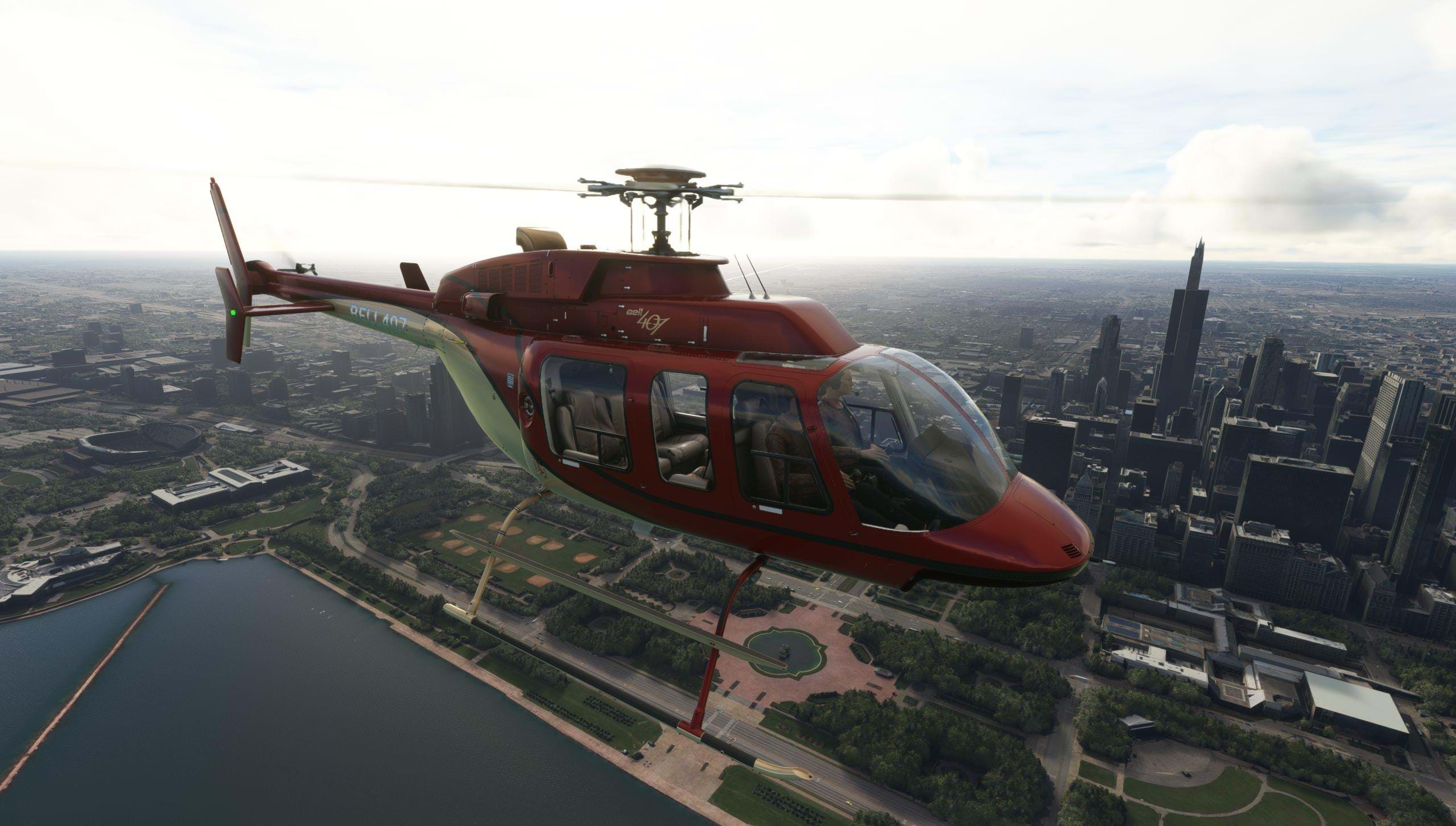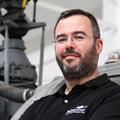A lot, really. And the biggest win may be the governor change that is plaguing turbine helicopters such as the default Bell 407, for example. But that’s not all.
Microsoft was kind enough to send me a list of everything that will be coming out in SU12. Well, at least everything that they have seemed to work on so far. I assume this list may change on release day so while this is coming directly from the source, do keep in mind things may have to be adapted.
If I had to guess I’d say this is pretty much set on stone and if any changes may be additions to the list. Hopefully.
Let’s dive right into it. Please note that some of these are a bit technical but it will all add up to help create a better helicopter experience in MSFS.
Helicopter Improvements – For Players
- Engine power jump was reduced during the governor activation.
- Added an engine trimmer. If the helicopter has this feature, it is now possible to slightly change the nominal engine/rotor RPM that a governor is trying to maintain. Please, refer to the new input commands in the Control Options menu: "ENGINE TRIM RPM INCREASE" and "ENGINE TRIM RPM DECREASE".
- The throttle control logic for multi-engine helicopters has become more consistent. However, we still do not support throttles separation (hopefully this will be added in the future).
- Some performance and memory optimizations have been done.
Helicopter improvements - For Aircraft Makers
- Added a governor switch check for turbine engines (so now it can be disengaged).
- The float parameter governed_pct_rpm_ref in the [HELICOPTER] section of the flight_model.cfg was made to work (it existed in the .cfg but not used in the code). Please, see SDK for details.
- The new engine trimmer can be adjusted via config file (please, see SDK for details). Also added the engine trim value indication to the Engine Debug window.
- The maximum speed of throttle movement by the governor is now limited for turbine engines (the same way as it used to be for piston engines). This limitation can now be adjusted via config file (please, see SDK for details). The default values for piston and turbine engines are kept the same for compatibility reason.
- The hardcoded collective speed limit was moved to the config file (please, see SDK for details). The default value is kept the same for compatibility reason.
- Added a collective to throttle correlator, which can now be adjusted via config file (please, see SDK for details).
- Added main rotor friction (makes rotors rotate not too long after the engine is shut down on the ground) which can be adjusted via config file (please, see SDK for details). The default value is kept at 0 for compatibility reason.
- The hardcoded value of the rotor braking torque is moved to the config file (please, see SDK for details). The default value is kept the same for compatibility reason.
Also, while not directly related to helicopters, there are some changes that will also influence this type of aircraft.
Thermals
The maximum altitude of thermals is now consistent with the altitude of clouds. Under and in clouds, thermals go from the ground up to the top of the clouds. At a distance from clouds, thermal will go from ground to the cloud base line altitude only. Thermals have also been better aligned with clouds, depending on the wind and cloud speed. In very big cloud formations such as towering cumulonimbus (TCU) formations, the maximum thermal limit has been removed. Previously vertical winds were limited to 2000 feet per minute, now vertical winds of up to 9000 feet per minute have been witnessed in the sim. We also fixed an issue with thermals being too strong in rainy or very windy weather conditions. Finally, the turbulence generated by mountain ranges have been reduced at higher altitudes.
Turbulence
A new assistance option allows to reduce the intensity of turbulence.
3 settings are available: Realistic, moderate and low. At a realistic setting, turbulence is fully modeled, and the air will be very rough in some weather conditions. At a low setting, vertical winds and gusts still exist but their variation is much more limited with a low pass filter and even in stormy weather, the flight will be quite smooth. Moderate offers an in-between setting.
Legacy flight model
A bug occurring with some aircraft using the legacy flight model and causing, among other issues, an incorrect g-force or load factor calculation has been fixed.
And finally, something for the future (come on, we need at least 3 engines for the CH-53 and the AW101, guys!).
New maximum engine limit raised to 16
Airplanes only can now have up to 16 engines.
Following multiple optimizations of the simulation, the maximum number of engines has been increased from 4 to 16. This only applies to airplanes, not yet to helicopters which are still limited to 2 engines and 2 rotors.
That’s it! That’s quite a nice and long list and it shows Microsoft and Asobo are on track to keep on improving helicopters!








